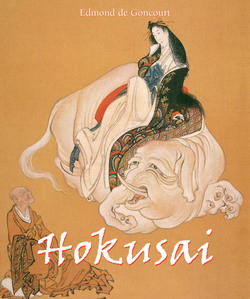Читать книгу Hokusai - Edmond de Goncourt - Страница 6
На сайте Литреса книга снята с продажи.
II. Surimonos, Yellow Books, and Illustrated Novels
2. Yellow Books
ОглавлениеHokusai’s compositions from 1780–90, like the first compositions by Utamaro, were engraved in little books, those popular books printed in black and white with a yellow cover from which they take their name: kibyoshi. They are small volumes 17 cm tall by 12.5 cm wide, with text and drawings. Each volume is typically composed of five sheets.
The first yellow book that he illustrated, in 1781, at the age of twenty-one, was a small novel in three volumes, entitled: Arigataï tsuno itiji, “With a Courteous Word, Anything is Permitted”, a novel of which no copies remain and whose text was first attributed, at the time it was published, to Kitao Masanobu, and then later to the famous novelist Kioden. However, the text and drawings are by Hokusai, who had published this pamphlet under the pseudonym of Korewasaï, which means, “Is that the one?”, the refrain of a little song at that time.
The following year, in 1782, Hokusai published a yellow book, Kamakura Tsushinden, “The Warriors of Kamakura”, two fascicules for which he did the text and the drawings and that he presented to the public under the name of Guiobutsu for the text, and Shunro for the drawings. The difficulty of translating Japanese thoughts into western languages has sometimes created differences in translations of the titles of books and novels, improvised through tête-à-tête work and translations long-thought out through solitary work.
Конец ознакомительного фрагмента. Купить книгу
